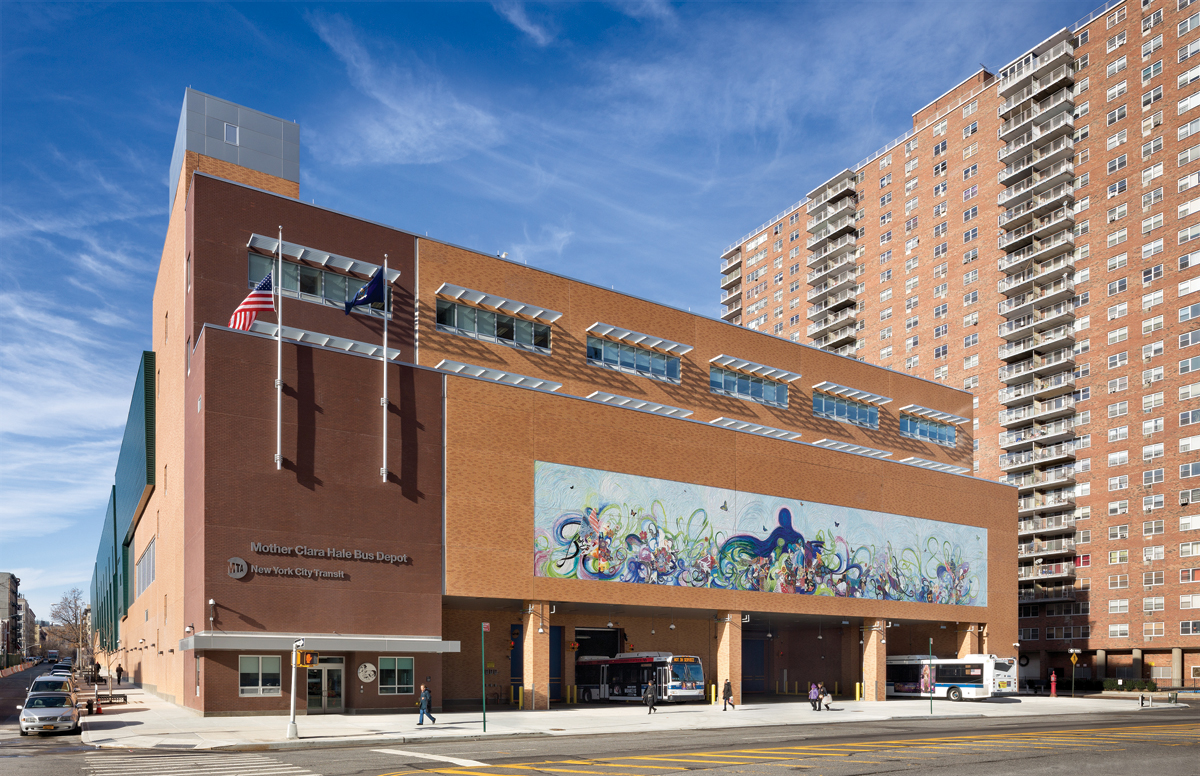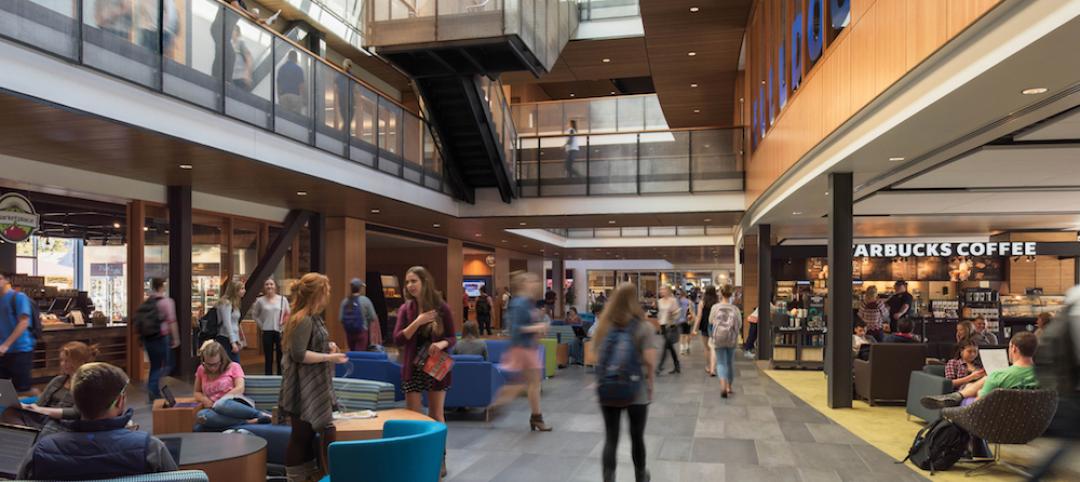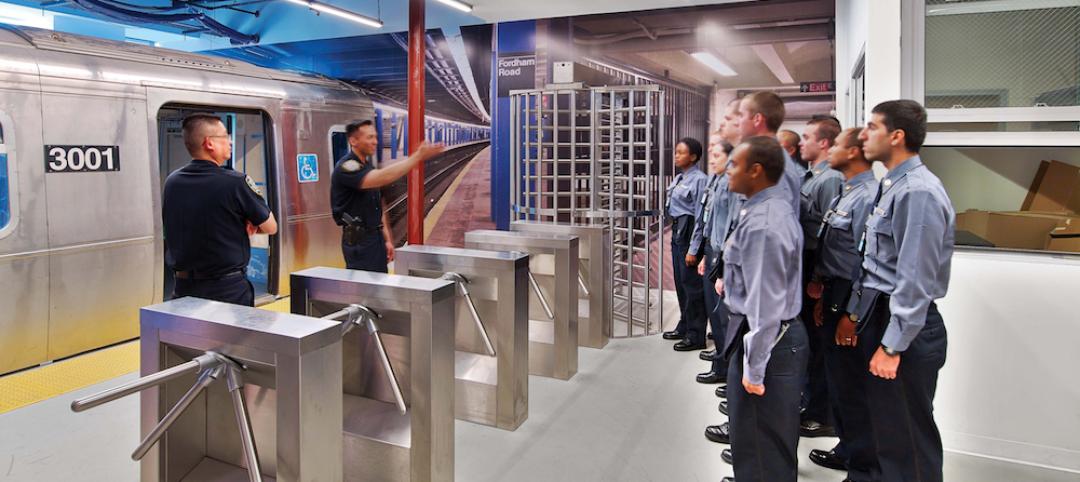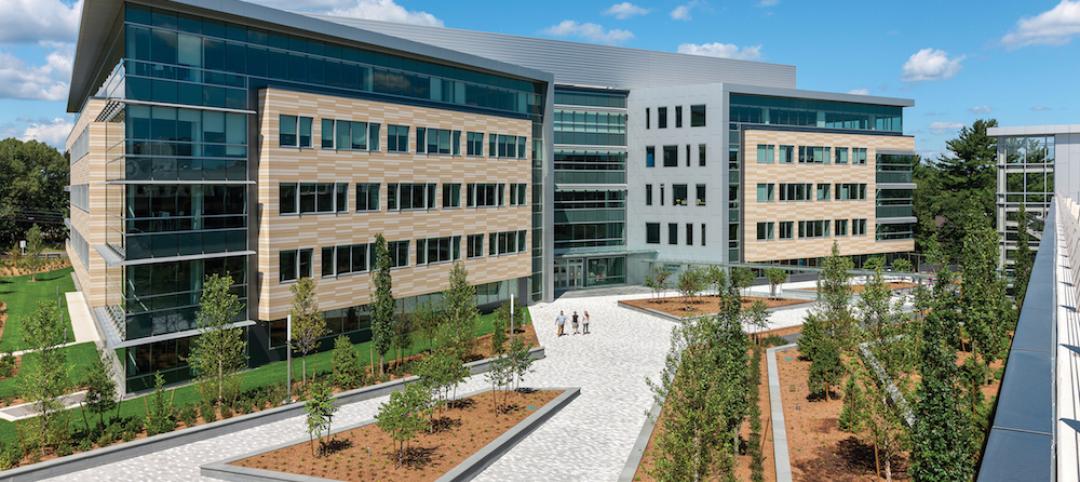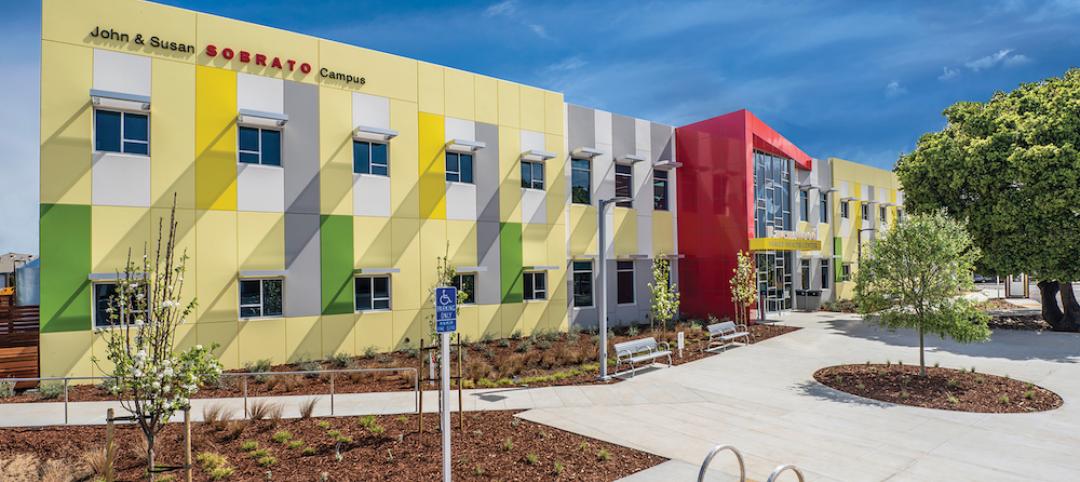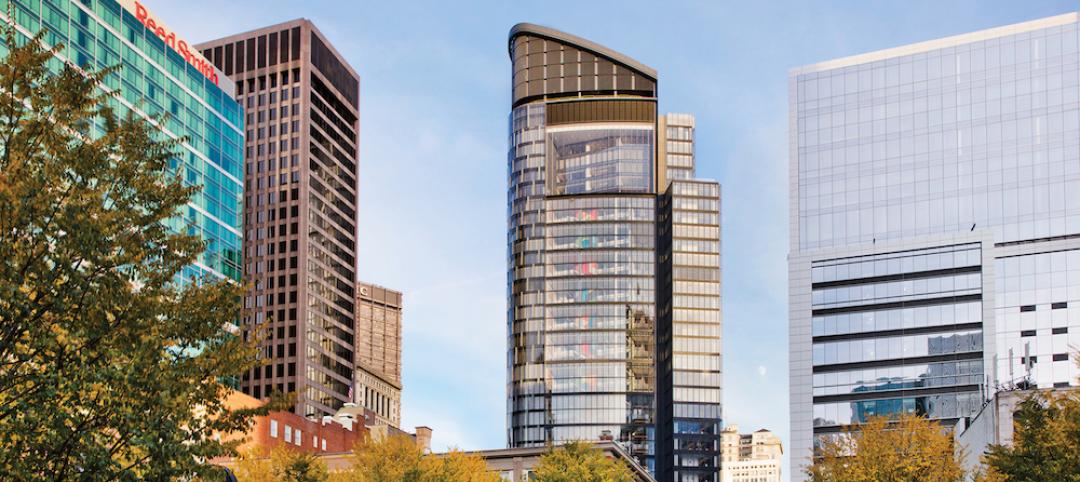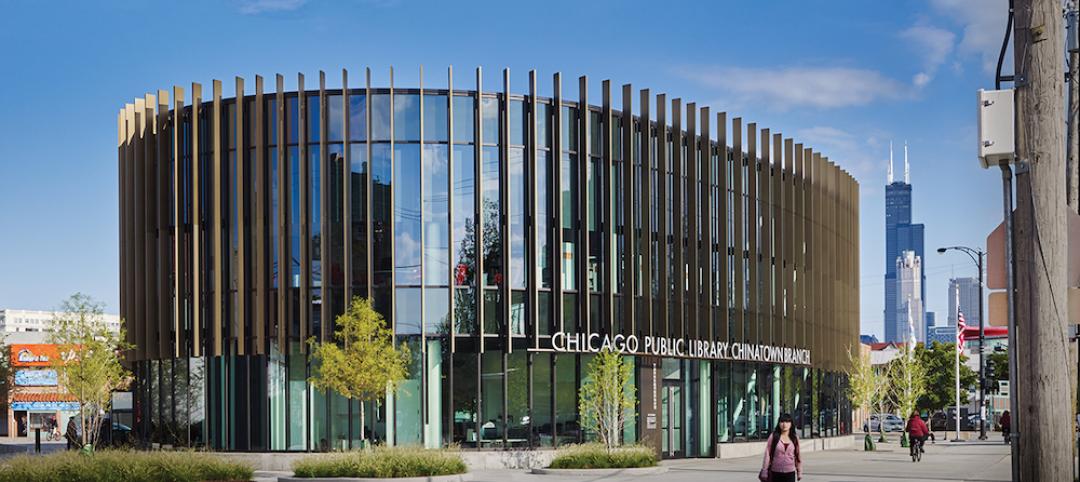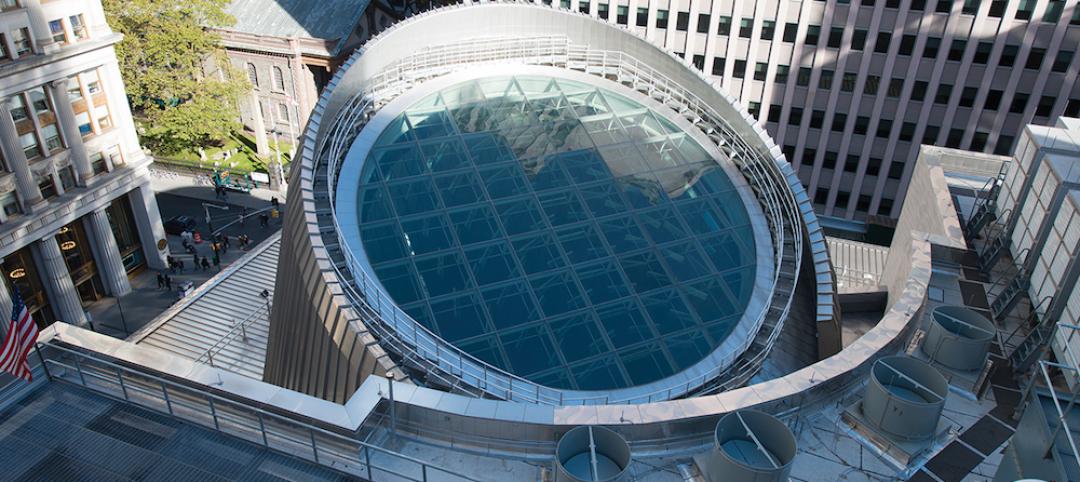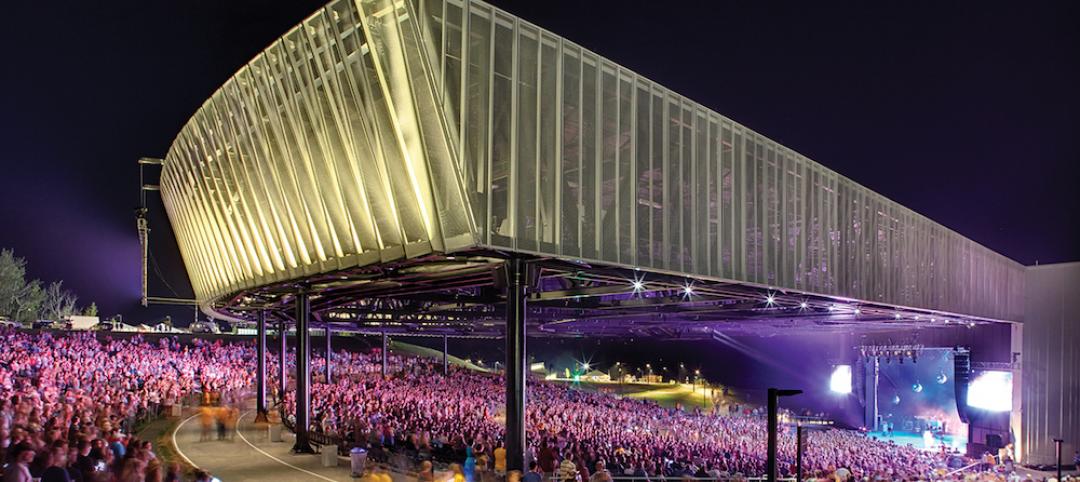Mother Clara Hale (1905–1992) was an American humanitarian who founded Hale House for unwanted children born with drug addictions. One year after her death, a bus depot on 146th Street in New York’s Harlem neighborhood was named after her. That building—erected in 1890 as a trolley barn, and razed and rebuilt as a bus depot in 2009—is now projected to be the first major LEED-certified bus depot in the country.
The owner, MTA New York City Transit, involved more than 150 community leaders in its first-ever community design charrette. Out of those meetings emerged a design that focuses on safe, efficient operations, with an emphasis on getting buses off the street as quickly as possible. To achieve that goal, the Building Team had to consider accessibility, clearance, service utilities, and lighting for each area and function.
This was not an easy building to work with. Given the magnitude of the facility, the structure was designed as three separate buildings connected via expansion joints to accommodate thermal movement. Soil conditions were poor. Lateral seismic loads were much greater than from wind. The dynamically shaped façade uses a potpourri of materials and systems—concrete masonry, precast concrete, curtain wall, storefront, art glass, and metal panels.
PROJECT SUMMARY
SILVER AWARD
Mother Clara Hale Bus Depot
New York, N.Y.BUILDING TEAM
Submitting firm: STV (architect, structural/MEP engineer)
Owner/developer: MTA New York City Transit
General contractor: Silverite
Construction manager: CB&IGENERAL INFORMATION
Project size: 390,000 sf
Construction cost: $225 million
Construction start to occupancy: November 2010 to December 2014
Construction method: Design-build
Architecture/engineering firm STV had to develop a complex system of steel member cantilevers from the floor edge to provide support at each transition and interface. The Building Team also relied heavily on BIM to integrate the design, help contractors link components with activities, and cut production time.
The depot features 12 service stations and two articulated workstations with six portable lifts. Half of the roof is cooled with CO2-absorbing plants; the other half has a reflective white surface. The facility’s 50,000-gallon rainwater collection system should reduce water use by one million gallons a year. A passive heating panel on the south façade allows air to be pulled in and preheated in the space between the façade and exterior masonry.
“The city of New York created an artistic centerpiece for the Harlem neighborhood,” says Terry Fielden, LEED AP BD+C, Director of K-12 Education at ICI, and a Building Team Awards judge. “The combined use of exterior artwork with the desire to conserve water resources sends a message of commitment to sustainability. The effort is a reminder that even a basic and functional facility can be a focal point of character in an urban environment.”
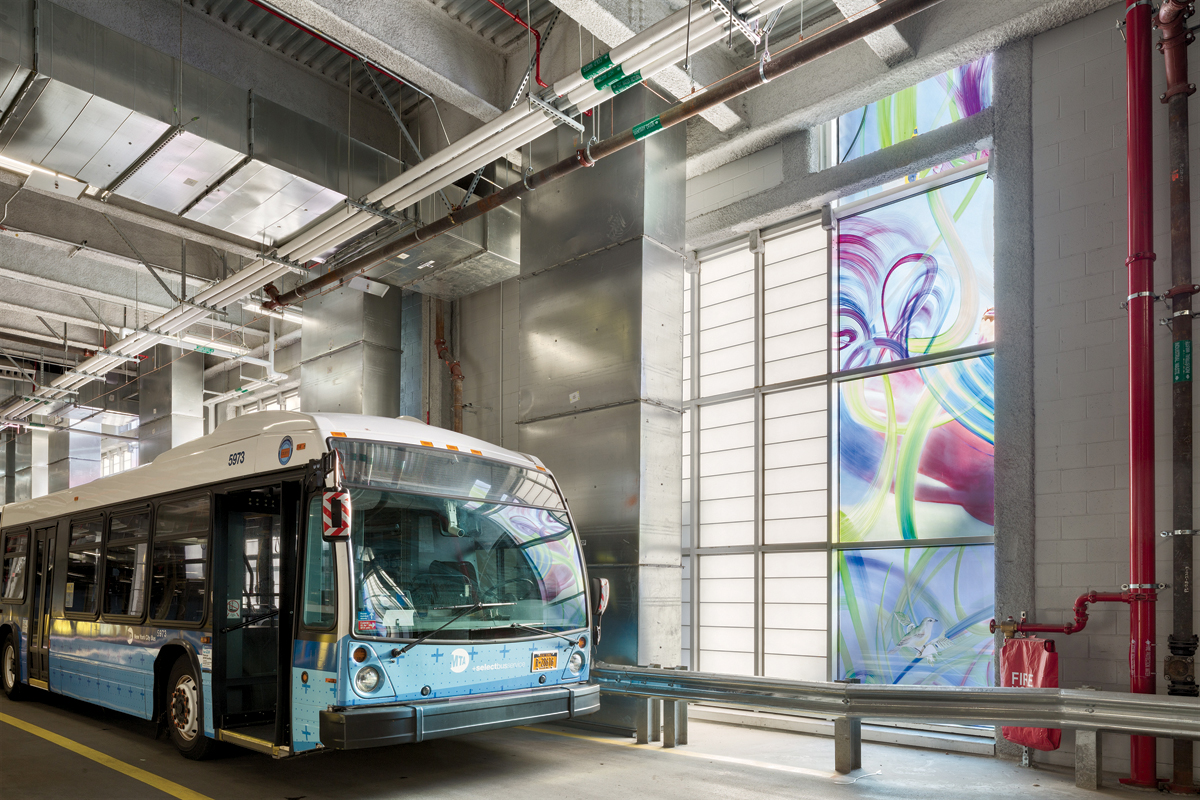 The Mother Clara Hale Bus Depot in Harlem is the first LEED-certified bus stop in the U.S.
The Mother Clara Hale Bus Depot in Harlem is the first LEED-certified bus stop in the U.S.
Related Stories
Building Team Awards | May 31, 2016
Gonzaga's new student center is a bustling social hub
Retail mall features, comfortable furniture, and floor-to-ceiling glass add vibrancy to the new John J. Hemmingson Center.
Building Team Awards | May 27, 2016
Big police academy trains thousands of New York's finest
The Police Training Academy in Queens, N.Y., consists of a 480,000-sf academic/administration building and a 240,000-sf physical training facility, linked by an aerial pedestrian bridge.
Building Team Awards | May 26, 2016
Cimpress office complex built during historically brutal Massachusetts winter
Lean construction techniques were used to build 275 Wyman Street during a winter that brought more than 100 inches of snow to suburban Boston.
Building Team Awards | May 25, 2016
New health center campus provides affordable care for thousands of Northern Californians
The 38,000-sf, two-level John & Susan Sobrato Campus in Palo Alto is expected to serve 25,000 patients a year by the end of the decade.
Building Team Awards | May 24, 2016
Los Angeles bus depot squeezes the most from a tight site
The Building Team for the MTA Division 13 Bus Operations and Maintenance Facility fit 12 acres’ worth of programming in a multi-level structure on a 4.8-acre site.
Building Team Awards | May 23, 2016
'Greenest ballpark' proves a winner for St. Paul Saints
Solar arrays, a public art courtyard, and a picnic-friendly “park within a park" make the 7,210-seat CHS Field the first ballpark to meet Minnesota sustainable building standards.
Building Team Awards | May 20, 2016
Pittsburgh's Tower at PNC Plaza raises the bar on high-rise greenness
The Building Team designed the 800,000-sf tower to use 50% less energy than a comparable building. A 1,200-sf mockup allowed the team to test for efficiency, functionality, and potential impact on the building’s occupants.
Building Team Awards | May 19, 2016
Chinatown library unites and serves two emerging Chicago neighborhoods
The 16,000-sf, pebble-shaped Chinatown Branch Library was built at the intersection of new and old Chinatown neighborhoods. The goal is for the building to unite the communities and serve as a catalyst for the developing area.
Building Team Awards | May 19, 2016
NYC subway station lights the way for 300,000 riders a day
Fulton Center, which handles 85% of the riders coming to Lower Manhattan, is like no other station in the city’s vast underground transit web—and that’s a good thing.
Building Team Awards | May 16, 2016
Upstate New York performing arts center revives once-toxic lakefront site
Early coordination, prefabrication, and judicious value engineering contributed to the accelerated completion of the Onondaga Lakeview Ampitheater, a Upstate New York design-build project.


